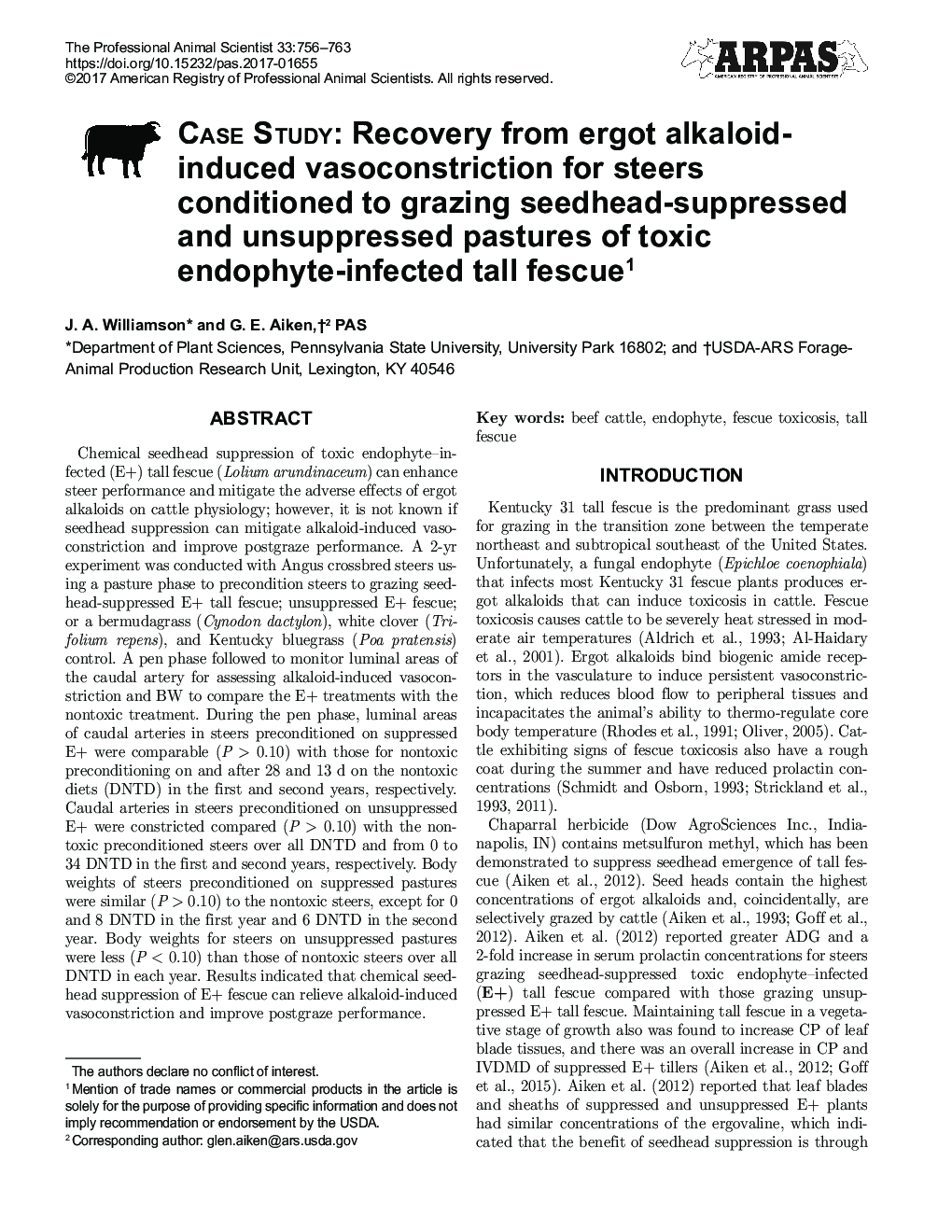| Article ID | Journal | Published Year | Pages | File Type |
|---|---|---|---|---|
| 8503717 | The Professional Animal Scientist | 2017 | 8 Pages |
Abstract
Chemical seedhead suppression of toxic endophyte-infected (E+) tall fescue (Lolium arundinaceum) can enhance steer performance and mitigate the adverse effects of ergot alkaloids on cattle physiology; however, it is not known if seedhead suppression can mitigate alkaloid-induced vasoconstriction and improve postgraze performance. A 2-yr experiment was conducted with Angus crossbred steers using a pasture phase to precondition steers to grazing seedhead-suppressed E+ tall fescue; unsuppressed E+ fescue; or a bermudagrass (Cynodon dactylon), white clover (Trifolium repens), and Kentucky bluegrass (Poa pratensis) control. A pen phase followed to monitor luminal areas of the caudal artery for assessing alkaloid-induced vasoconstriction and BW to compare the E+ treatments with the nontoxic treatment. During the pen phase, luminal areas of caudal arteries in steers preconditioned on suppressed E+ were comparable (P > 0.10) with those for nontoxic preconditioning on and after 28 and 13 d on the nontoxic diets (DNTD) in the first and second years, respectively. Caudal arteries in steers preconditioned on unsuppressed E+ were constricted compared (P > 0.10) with the nontoxic preconditioned steers over all DNTD and from 0 to 34 DNTD in the first and second years, respectively. Body weights of steers preconditioned on suppressed pastures were similar (P > 0.10) to the nontoxic steers, except for 0 and 8 DNTD in the first year and 6 DNTD in the second year. Body weights for steers on unsuppressed pastures were less (P < 0.10) than those of nontoxic steers over all DNTD in each year. Results indicated that chemical seedhead suppression of E+ fescue can relieve alkaloid-induced vasoconstriction and improve postgraze performance.
Related Topics
Life Sciences
Agricultural and Biological Sciences
Animal Science and Zoology
Authors
J.A. Williamson, G.E. PAS,
